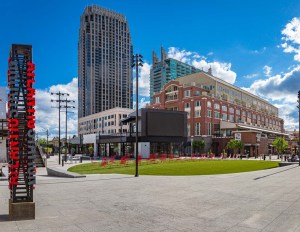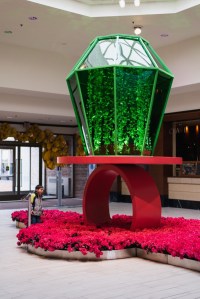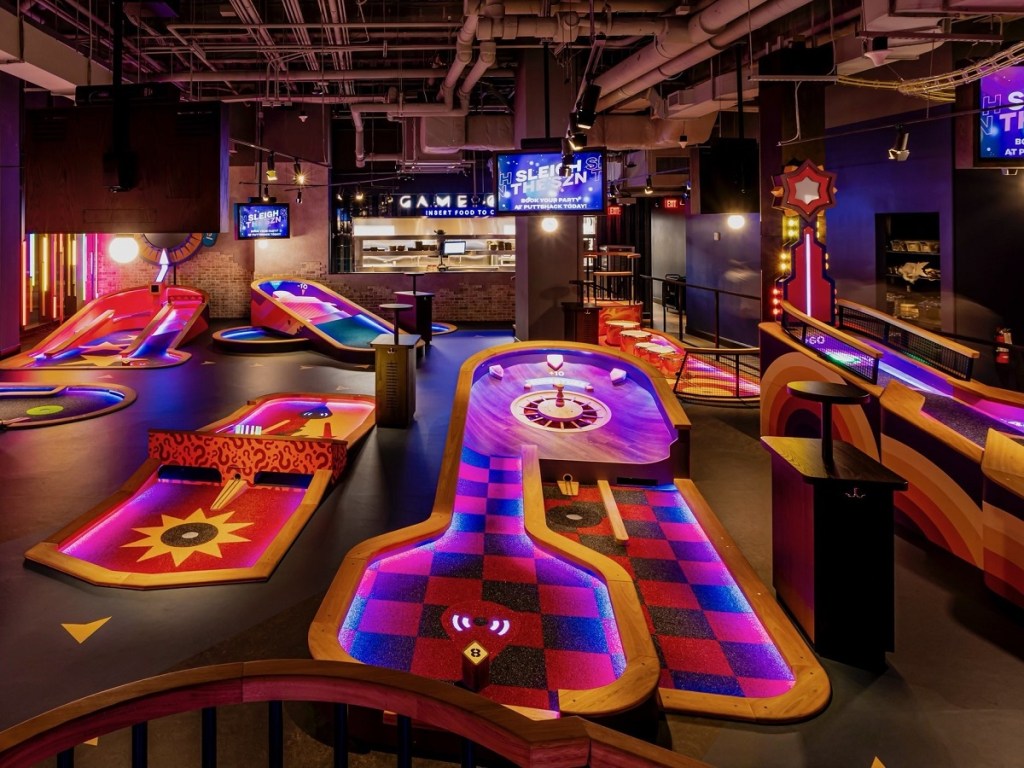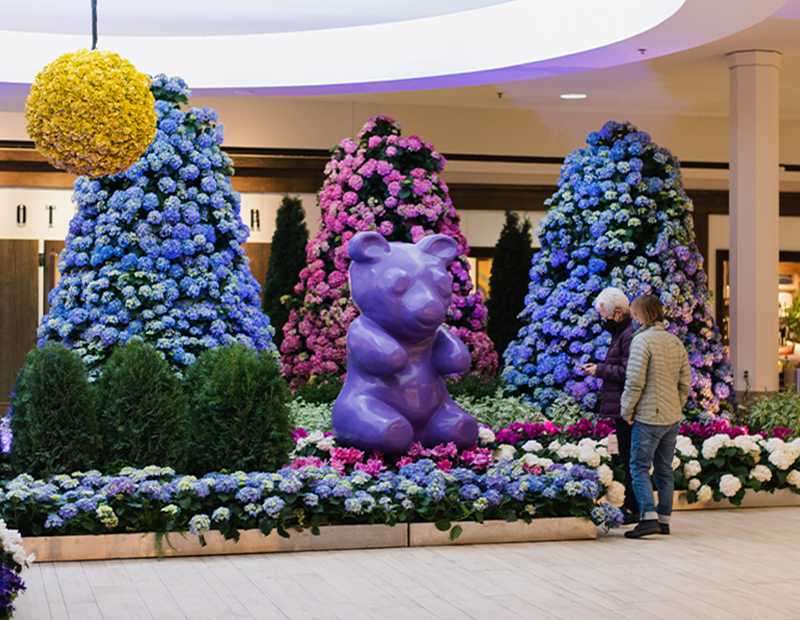From Transactions to Interactions: What’s Next for Experiential Retail?
Experts discuss the rise of the experience economy and how immersive shopping is driving business.
The retail sector has been making a strong comeback since the beginning of 2022. According to a recent Hines report, investor sentiment is favorable for certain asset pricing and there is potential for long-term growth, with e-commerce’s negative impact on physical stores expected to reach a turning point by 2027.
The same source shows that retailers that focus on creating a positive shopping experience and fostering a sense of community are likely to benefit in the long run. Also, there are pockets of opportunity for those willing to invest while pricing remains advantageous.
This is where experiential retail comes into play.
READ ALSO: What Will Retail Look Like in 2023?
But what does experiential shopping really entail? Alanna Loeffler, managing director for Cushman & Wakefield’s Americas Retail Services, describes it as any type of store setting where customers are able to have an experience beyond having to directly purchase products—it could be experiencing a product or a brand through technology, immersive sensory encounters, creative storytelling, artwork installations, incorporating food and drink offerings into the retail mix, and more.
“While all retail creates an experience, it is about how you curate it and what types of tenants you bring in to create the experience you are looking for,” Scott Sherman, founder & principal of real estate investment firm Torose Equities, told Commercial Property Executive.
Defying the borders of experiential shopping
Experiential retail has been gaining traction in recent years as consumers increasingly seek more than just transactional shopping experiences. While retailers are accelerating investments in creating unique and memorable in-store engagements to differentiate themselves and attract customers, the role of physical stores continues to evolve and means something different to each and every brand, depending on their sales channel strategies and what business objective they are trying to achieve.
Sherman believes the battle between traditional shopping vs. e-commerce is misleading and has been for a decade. People thought retail was dying and everything was going to switch to online shopping, but now we are seeing the most successful online retailers looking for brick-and-mortar stores because they noticed customers want a more personal connection with products and brands as a whole.
“Post-COVID-19, now more than ever, we see the physical store as a major touchpoint with the consumer—a place where the consumer can see, feel and interact with both products and the brands which offer them,” Loeffler noted. “The store has become a place where brands can really showcase who they are, what they value and what is at the core of their consumer experience. It is a place where they can tell their story on their terms.”
How do brands want their customers to feel when they walk into their stores? What is the most important message they are looking to communicate? How should they position their products so that the consumer can engage effortlessly? Can these ideas be expressed through technology or other creative ways of communication? What conveniences in the shopping experience do brands offer and how do those play into the overall experience? Loeffler believes all these questions should weigh equally on every retailer’s mind for an effective long-term strategy.
“We are in a time where we are seeing a widespread human and consumer demand for in-person experiences. The more retail brands are able to capitalize on this moment and seize the opportunity, the more successful they will be in the long run,” she concluded.
Applying experiential retail successfully
Torose Equities handles leasing for the retail portion of Midtown at Bonita, a mixed-use project in Florida’s Gulf Coast, and it is looking at retailers that bring innovation and seek to disrupt the retail market as we know it. A strong roster of retail tenants helps drive demand for the hotel and apartment components of the project, and those boost demand for retail in turn.
“As a landlord, we are more focused on the curation to create an overall experience for the customers, but the tenants are the ones implementing that experience within their stores,” said Sherman. “To create an environment that draws customers to the property, it’s important to find the right mix of uses such as food and beverage or entertainment and other retailers.”
READ ALSO: Retail Property Redevelopment Strategies
Recently, the U.S. has seen a slew of new concepts that are more experiential and entertainment-oriented than your traditional brick-and-mortar store. Examples of this trend include the floral experience at Galleria Edina in Edina, Minn., a shopping center previously owned by Hines. The 15-day-long installation of live flowers was a great traffic driver for the center and its retailers’ sales to kick off spring.
Hines’ mixed-use developments Atlantic Station in Atlanta, Ga., and Fenton in Cary, N.C., produce weekly health and wellness, live music and children’s events to drive traffic to the properties on slower days.
At Atlantic Station, for example, Rihanna’s cosmetic brand Fenty recently did a “Team Fenty Tailgate” pop-up in the common area to promote the singer’s performance at the Super Bowl LVII game and new limited edition Fenty items sold in thematic packaging. The event brought thousands of people to the property on a cold rainy Sunday.
In South Florida, Sports & Social, a 20,000-square-foot dining and entertainment venue that is scheduled to open in Miami Worldcenter, aims to take experiential shopping to a whole new level. It is set to feature social games such as skee-ball, foosball, pop-a-shot, arcade games, shuffleboard and beer pong, as well as a 53-foot LED display that will stream a variety of games at once. Another unconventional retail concept recently opened in Miami’s Brickell City Centre. Puttshack is a 27,000-square-foot venue that features three nine-hole competitive neon-lit mini golf courses, along with dining and drinking experiences.
What’s in store for experiential retail?
Post-pandemic, the Gen Z consumer—who is literally the most connected demographic of our time in terms of technology and social media—will continue to crave in-person experiences and interactions with brands and products. They already come to expect an experiential component to retail, and technology used along the consumer journey will need to continue to be enhanced to keep up with the younger generation and their expectations.
Loeffler sees experiential shopping evolving to the point where the line between stores, restaurants and event spaces begins to blur.
“Fashion runway shows in the middle of dinner at a hot restaurant or order your cappuccino at the branded café and roam the halls of your favorite luxury designer’s townhouse,” she told CPE. “There will be endless ways to innovate the consumer journey through creative experiences that offer a multi-sensory encounter of the brand and its products. It allows a company to truly and uniquely share its integrity and brand ethos with the world.”
Loeffler also sees developers and landlords continuing down a path of looking at their centers in a more holistic way. There won’t be areas strictly zoned or planned for restaurant use or retail, spaces will be curated and looked at as part of a total shopping and lifestyle experience and dynamic new concepts that integrate a variety of sensory encounters and options will likely be the most coveted.
Starr Cumming, retail director at Hines, thinks that retailers will bring more technology into their spaces to enhance customers’ shopping experience. Going forward, artificial intelligence, virtual reality or holographic and immersive experiences will most likely be integrated into store concepts. Technology will also allow retailers to gather more intel on their customers’ wants and needs, taking customized shopping experiences to a whole new level.
Anther trend that’s been shaping the retail experience lately is the increasing popularity of ESG and DEI practices. As retailers plan for experiential events in the future, they will continue to keep these two pillars in mind and message to the consumer how they’re participating in both initiatives.











You must be logged in to post a comment.